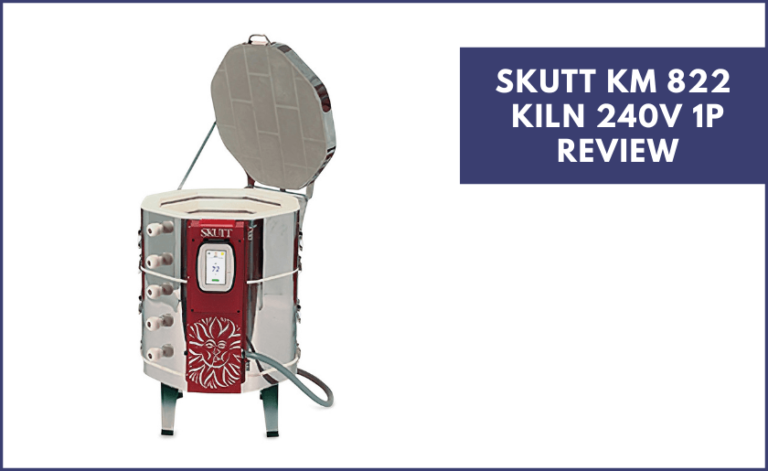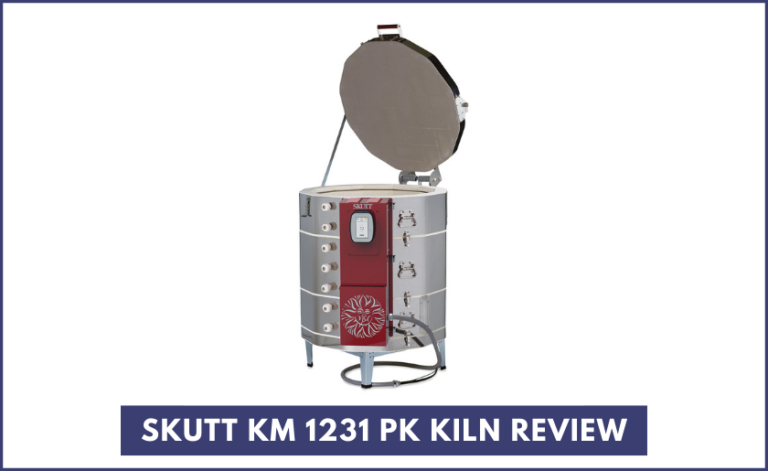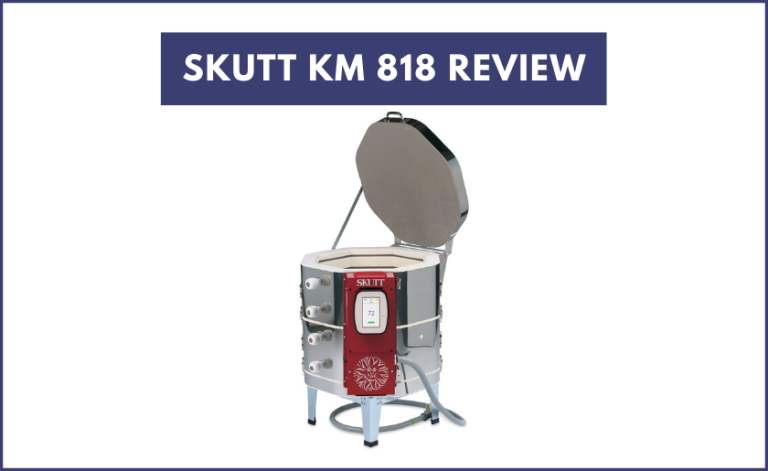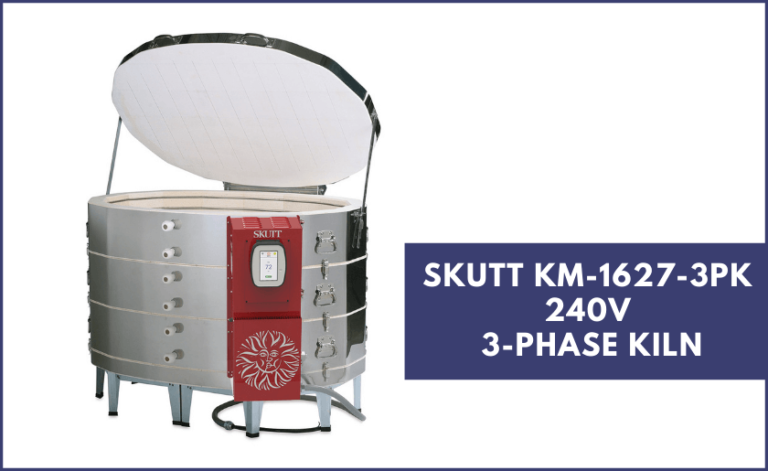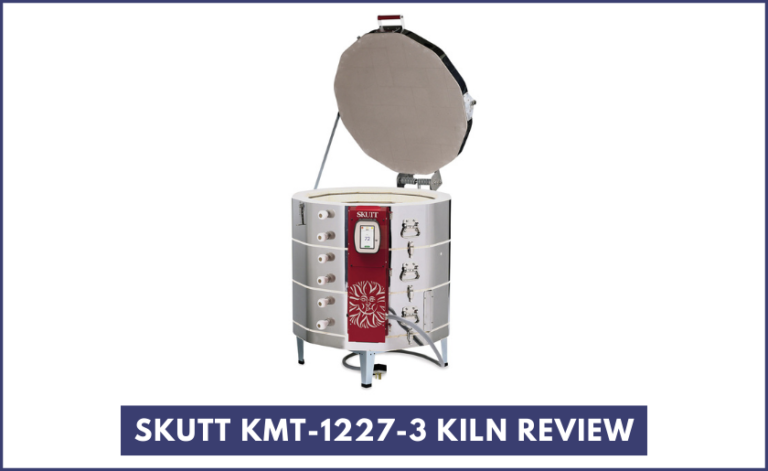Pottery Perfection: Learn How to Build a Kiln from Scratch
To build a pottery kiln, dig a hole in the ground, line it with bricks, add a kiln shelf and cover it with a lid. Building a pottery kiln can be an exciting and rewarding experience for any artist who wants to fire their own pieces.
The process of creating a kiln involves excavating the ground, assembling the walls, lining the interior with bricks, adding a kiln shelf, stacking and gluing firebricks to create a chimney, and covering the entire structure with a lid. These steps require patience, precision, and careful attention to safety guidelines.
However, once complete, the artist has a fully functional and unique pottery kiln to fire their own creations. This guide provides the essential steps to successfully build a pottery kiln.
Materials And Tools Needed To Build A Kiln
Building a pottery kiln is an excellent way to pursue your passion for pottery. However, it requires specific materials and tools to construct a kiln that can withstand high temperatures. In this blog post, we’ll discuss the essential tools and materials required to build a kiln.
A Comprehensive List Of Tools And Materials Required To Build A Kiln
Building a pottery kiln requires a significant investment of time, money, and effort. Before you begin building your kiln, you must have the necessary tools and materials. Here’s a comprehensive list of what you’ll need to build a high-quality kiln:
Materials
- Bricks: In building your kiln, you’ll need a certain amount of fire bricks that can endure high temperatures. Fire bricks cost around $2 to $5 per piece and can be purchased in home improvement stores, online shops or brick suppliers.
- Wood: You’ll need wood to create a sturdy frame for your kiln. You can purchase wood from a local lumberyard or home improvements stores. The cost of wood will depend on the kind that you choose.
- Insulation material: Insulation material helps regulate the temperature inside the kiln, keeping it at optimal levels. You can use many kinds of insulation materials, including kaowool and ceramic fiber blanket. They can be purchased in home improvement stores or online shops ranging from $3 to $8 per square foot.
- Metal sheets: Metal sheets are usually used to create the exterior, protective shell of the kiln. Stainless steel sheets are an excellent choice because it doesn’t rust. You can get them at a metal supplier or online shops for about $15 to $20 per sheet.
- Refractory cement: You’ll need refractory cement, which is resistant to high temperatures, to seal the gaps between the firebricks, and for smoothing out the insulation and ceramic fiber. A bag of refractory cement that weighs 50 pounds costs around $40 to $50.
Tools
- Measuring tape and ruler: These tools are used to accurately measure the dimensions of your kiln’s frame, bricks, and other materials.
- Saw: A saw is necessary to cut the lumber to size to create the frame and door frame of the kiln. A circular saw is recommended for this task.
- Drill: You will need a drill to assemble the kiln frame and attach the metal sheets, doors, and hinges.
- Hammer and nails: This tool will come in handy when constructing the frame for the kiln.
- Screwdriver: This tool is used to tighten and loosen screws during the assembly phase.
- Utilities knife: A utility knife is used to cut the insulation and ceramic fiber, which will be used to insulate the kiln’s interior.
- Welder: You’ll need a welder to fasten hinges, fire grates, and other metal parts of the kiln.
Where To Purchase Materials And Tools
Now that we’ve listed down the essential materials and tools, you may wonder where you can purchase them from. Here are some options:
Materials
- Bricks: Home depot or ace hardware stores, amazon, or brick suppliers such as firebrick.org.
- Wood: Local lumberyard or home improvement stores such as lowe’s or home depot.
- Insulation material: Online shops such as amazon, inswool, or mcmaster-carr.
- Metal sheets: Online shops such as amazon, or metal suppliers.
- Refractory cement: Online shops such as amazon, ebay, or home depot,
Tools
- Measuring tape and ruler, saw, drill, hammer, and nails, screwdriver: These tools can be easily found in any local hardware store.
- Utilities knife: Online shops or home insulation suppliers such as mcmaster-carr.
- Welder: Welding shops or online shops such as amazon. You can always rent a welder instead of buying one.
A Table Of Material Prices And Available Sellers
| Materials | Price Range | Available Sellers |
| —————– | ———– | ——————————————— |
| firebricks | $2 to $5 per piece | home improvement stores, online shops |
| wood | varies | local lumberyard or home improvement stores |
| insulation material | $3-$8 per sq. Ft. | home improvement stores, online shops |
| metal sheets | $15-$20 per sheet | online shops, metal suppliers |
| refractory cement | $40-$50 per bag | online shops,
Building a pottery kiln requires a lot of preparation and investment, but the satisfaction of creating your pottery is rewarding. By having an accurate list of essential materials and tools, you’ll be able to plan and budget your resources accordingly.
Get creative with your purchasing methods and have fun constructing your own pottery kiln!
Designing Your Kiln
If you’re looking to build your own pottery kiln, designing the kiln is a crucial step in the process. Here are some key points to consider:
Determine The Size Of The Kiln Suitable For Your Needs
- Consider the amount and size of pieces you plan to fire at once.
- Remind yourself that larger kilns are more expensive to build and require more fuel to operate, so take into account your budget when deciding on the size.
Develop A Design That Meets Your Budget And Requirements
- Decide on what type of kiln you need and make a list of features that you want to include in your design.
- Calculate the cost of materials and fuel needed for your design to make sure it falls within your budget.
Common Designs For Kilns
There are three common designs for pottery kilns:
Updraft Kiln
- The simplest design, where heat rises through the kiln from burners located at the base.
- Best for earthenwares, not as effective for some high-fire work.
Downdraft Kiln
- The opposite of an updraft kiln in terms of the direction of heat.
- Preferred for high-fire work, but more expensive to build.
Crossdraft Kiln
- Burners are located at the sides of the kiln, and the heat moves through the kiln horizontally.
- Optimal for oxidation firings.
Benefits And Drawbacks Of Each Design
Updraft Kiln
- Benefits: Simple and easy to build, cost-effective
- Drawbacks: Small sizes only, not ideal for high-fire work
Downdraft Kiln
- Benefits: Better for high-fire work, uniform heating, better fuel efficiency
- Drawbacks: More expensive to build, difficult to design and construct
Crossdraft Kiln
- Benefits: Efficient fuel usage, good for oxidation firings
- Drawbacks: Requires precise construction and balance, can be challenging to load evenly
Designing your own pottery kiln is a significant task that requires careful consideration of your needs and budget. By researching and understanding the common designs available, you can develop a design that meets your specific requirements and produce high-quality pottery.
Building Your Kiln
Are you a pottery enthusiast thinking of building your own kiln? A pottery kiln is an essential tool for creating beautiful glazed pottery pieces. It is a complex structure that needs to be built correctly to avoid any mishaps while operating the kiln.
In this guide, we will provide you with detailed instructions on how to build your own pottery kiln from scratch. Here are the steps you need to follow to construct your kiln.
Clearing The Site
Before beginning construction, you need to make sure that you have a clear and level site to build your kiln. The area should be free from any vegetation and debris. Here are the steps to clear the site:
- Clear out any vegetation on the site using a lawnmower or brush cutter.
- Remove rocks, stumps, and other debris that might be on the site.
- Level the ground using a shovel or a bulldozer.
Laying The Foundation
The foundation is the most important part of a kiln as it provides a stable base for the kiln and helps it withstand the high temperatures during firing. The foundation should be made of concrete to ensure stability. Here are the steps to lay the foundation:
- Dig the foundation hole as per your design requirements using a shovel or excavator.
- Use wooden boards to create the frame of the foundation.
- Pour a layer of concrete into the foundation hole.
- Insert steel rebar to add strength to the foundation.
- Pour another layer of concrete on top and level it out using a trowel.
Constructing The Base
The base holds the kiln together and provides support to its components. Here are the steps to construct the base:
- Build a frame out of cinder blocks or bricks, making sure it is levelled.
- Connect the base to the foundation by cementing it into place.
Building The Walls And Arches
Now that the foundation and base are in place, it’s time to build the walls and arches. This is the most complex part of the construction process and requires attention to detail. Here are the steps to build the walls and arches:
- Lay out the bricks or cinder blocks for the wall according to your design.
- Use heat-resistant mortar to cement the blocks together.
- Build the arches using bricks or steel rods and concrete.
- Ensure that all seams and corners are sealed with mortar to prevent heat from escaping.
Installing The Chimney And Vents
The chimney and vents allow for proper airflow within the kiln and control the temperature. They also help to release gas and smoke. Here are the steps to install the chimney and vents:
- Decide on the location and size of the chimney.
- Build a flue out of bricks or metal tubing.
- Secure the flue at the top of the kiln with mortar.
- Add vents to the sides of the kiln to regulate airflow.
Now that you have completed the construction of your kiln, it’s time to fire it up and create some beautiful pottery. Remember that safety is paramount when operating a kiln, so always follow the manufacturer’s instructions and operate the kiln on a level surface.
With proper care and maintenance, your kiln will last you for many years to come.
Installing The Kiln Components
Digging Into The Technical Aspects Of The Kiln Construction
Building a pottery kiln may seem daunting, but with a bit of technical know-how, installing the kiln’s components becomes a manageable task. Here are some essential details to consider when installing the kiln’s components.
Detailed Instruction To Install Components, Including The Burners, The Temperature Control System, And Safety Valves
Proper installation of kiln components is essential for efficient and safe operation. Follow these step-by-step instructions to install your kiln components correctly.
Burners
- Securely attach the burners to the kiln’s ‘firebox’ with bolts.
- Install an lpg pipe to provide fuel to the burners.
- Affix an air intake valve adjacent to the burners.
- Depending on the kiln’s size, it may require more than one burner.
Temperature Control System
- Purchase a temperature controller that can handle the necessary temperatures for the kiln.
- Install the thermocouples by drilling holes into the kiln walls and insert the thermocouples inside.
- Connect the controllers to the electrical circuit, ensuring that all wiring is done according to safety codes.
Safety Valves
- Install safety valves that control the kiln’s gas flow.
- Ensure that the valves are located outside the kiln and that they have pressure gauges attached.
How To Test And Calibrate The Kiln’S Temperature Control System
After installing the kiln components and thermocouples, it’s vital to test and calibrate the temperature control system to ensure correct temperatures are attained.
- Set the temperature controller at a specific temperature and wait for the kiln to reach it.
- Check the temperature with an external thermometer to ensure that the controller’s readings are accurate.
- If the kiln’s temperature takes too long to reach the temperature set on the controller, adjust the setting accordingly.
- Continuously test and calibrate the temperature control system for precise temperature regulation.
With these detailed instructions, one can safely install components, including the burners, temperature control system, and safety valves, and calibrate the kiln’s temperature control system. Remember to always follow safety codes to ensure maximum safety and kiln efficiency.
Clay Firing
A Brief Exploration Of Pottery Firing Techniques
When it comes to pottery firing, there are several techniques you can use to achieve different results. Bisque firing is the first firing, which hardens the clay and drives out any remaining moisture before glazing. Glaze firing, on the other hand, applies the glaze and fires it into a glass coating on top of the clay.
Here are some key points to keep in mind about each technique:
- Bisque firing:
- This technique sets the clay, removing all water.
- It is done at a lower temperature, around 1600°f (871°c).
- It prepares the clay for glaze firing.
- Glaze firing:
- This technique adds a shiny, glassy finish to the pottery.
- It is a higher temperature than bisque firing, typically around 2200°f (1200°c).
- The heated glaze melts into the ceramic, permanently fusing the two together.
Step-By-Step Guide To Firing Your Kiln
Knowing how to fire your kiln is a crucial step in creating your pottery masterpiece. Here are the steps you need to follow:
- Load the kiln:
- Start by cleaning the kiln shelves and placing kiln wash over them to prevent pieces from sticking.
- Arrange your pottery pieces onto the shelves, being careful not to place anything too close together or too close to the edges.
- Make sure all the shelves are level before stacking them.
- Power up the kiln:
- Close the kiln lid.
- Turn on the kiln and set it to the temperature and time needed for your chosen firing technique.
- Monitor the temperature through the peephole or kiln’s digital display.
- Control temperature and airflow:
- Adjust the dampers to control the airflow, allowing some oxygen to enter the firing chamber.
- A gas kiln will have different controls than an electric kiln.
- Monitor the firing:
- Check the kiln regularly to ensure the temperature is correct and consistent throughout.
- Record relevant details in your firing log, such as the duration and temperature.
- Listen for the sound of chemically bonded water molecules escaping from the pottery, also known as the pyrometer’s cone.
- Cool the kiln:
- When the firing cycle is complete, let the kiln cool down before unloading.
- Once the kiln reaches room temperature, unstack the shelves and remove your pottery.
- Be sure to examine your pieces for any cracks or deformities caused during firing.
With these simple instructions, you can fire up your kiln and start creating beautiful, functional pieces of pottery. Just remember to follow all safety guidelines and enjoy the creative process!
Frequently Asked Questions Of How To Build A Pottery Kiln
How Do You Build A Pottery Kiln In Your Backyard?
Construct a wooden base and metal frame. Cover the chamber with insulating fire bricks, install heating elements, and secure a lid. Install a thermocouple and heatproof wiring. Finally, test the kiln for safety and functionality.
What Are The Materials Required To Build A Pottery Kiln?
You will need fire bricks, heating elements, heatproof wiring, thermocouples, refractory mortar, insulations of ceramic fibers and perlite, a metal frame, a wooden base, temperature controllers, and an electric or gas burner.
How Long Does It Take To Build A Pottery Kiln?
Building a pottery kiln will likely take several days to weeks, depending on the complexity and the size of the kiln. It depends on the builder’s proficiency in handling tools and construction skills, and the availability of materials and equipment.
Can A Beginner Build A Pottery Kiln?
It is possible for a beginner to build a pottery kiln, but it requires dedicated time and hard work. It would be best to gain sufficient knowledge of pottery kilns, potters wheel techniques, and the required tools and equipment to build a kiln efficiently.
How Much Does It Cost To Build A Pottery Kiln?
The cost of building a pottery kiln depends on the type of kiln, size, and materials used. It can typically range from a few hundred dollars to thousands of dollars. Building a small electric kiln can be more cost-effective, but larger kilns require more expensive materials.
Conclusion
Creating your own pottery kiln is a rewarding and fulfilling experience that can provide a lifetime of use and creativity. By following the steps outlined in this guide, you can create a kiln that is safe, efficient, and effective. Remember to always prioritize safety, and to follow all precautions when operating your kiln.
With a little patience, research, and determination, you can create a kiln that meets your unique needs and provides endless possibilities for your pottery journey. Whether you are a beginner or a seasoned pro, building your own pottery kiln can be a fun and adventurous project that allows you to take your creativity to the next level.
So what are you waiting for? Get started on your kiln building journey today!

